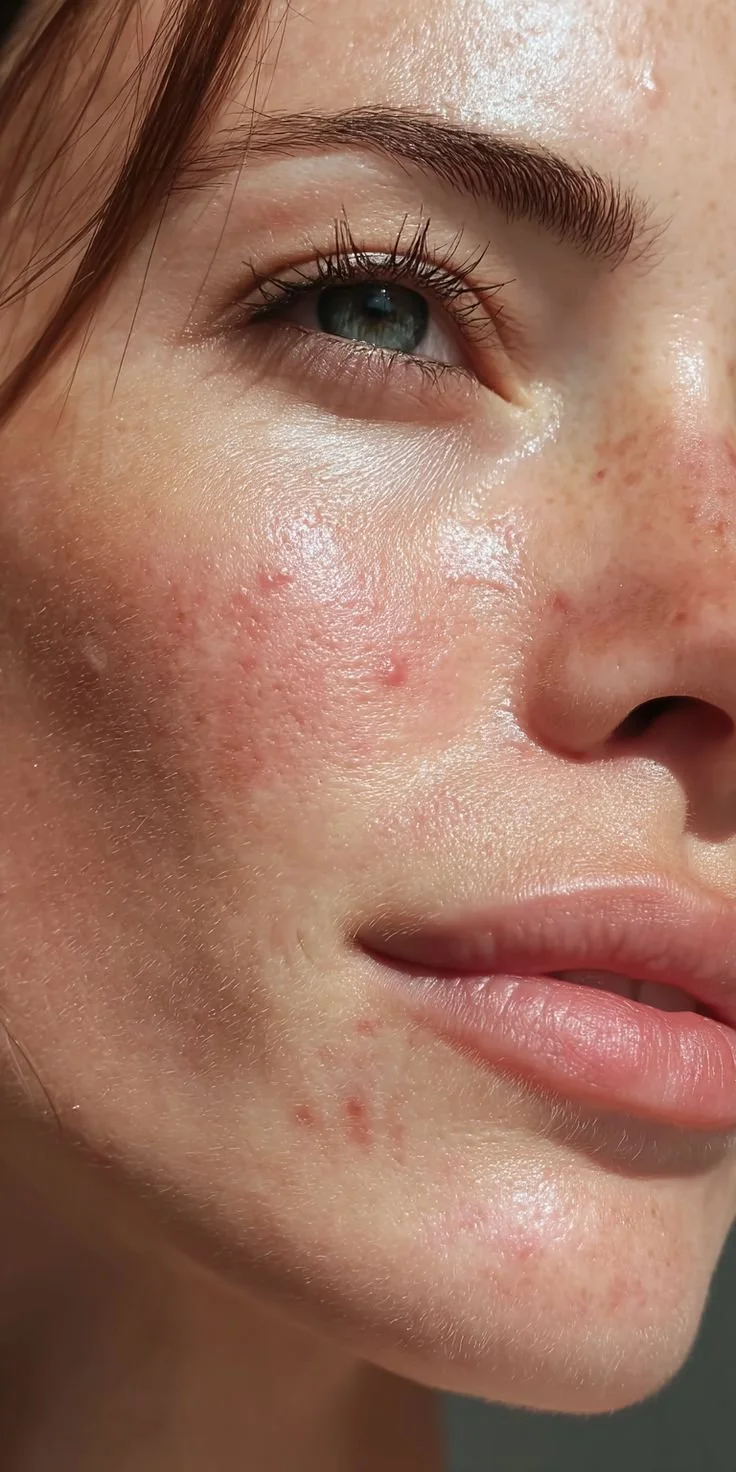What Is Your Skin Breakouts Trying to Tell You?
By Jessica Karvelis (BHSc Nat) (RN) (IIN)
Ever looked in the mirror and wondered why certain spots always seem to pop up in the same place? Acne, rashes, or redness might feel like just skin issues, but did you know your skin is actually a messenger, telling you what’s going on inside your body?
Your skin is your body’s largest organ and a real-time report card on your health. By learning to “read” these signals, you can better understand your body and start addressing the root causes of your skin problems.
Let’s dive into what different breakout locations on your face might mean…
As your largest organ, the skin is intricately connected to internal systems like your digestive, hormonal, and immune systems. Many factors, such as stress, diet, hormone levels, and even gut health, can all influence skin health. And while the idea of “face mapping” (linking facial zones to specific organs) comes from traditional Chinese medicine, emerging science offers partial support for some of these patterns, especially around hormones and digestion [1][2].
1. Forehead: Digestive Health & Stress Levels
Breakouts on the forehead are often linked to stress and digestive issues. Chronic stress raises cortisol levels, which can increase sebum production and inflammation, both of which contribute to acne [3]. Meanwhile, poor gut health has been associated with skin issues via the gut–skin axis [1][2].
Tips:
Prioritise gut-friendly foods like sauerkraut, kefir, dark leafy greens and cruciferous vegetables [1].
Manage stress with tools like meditation, journaling, walking or yoga [3].
Stay hydrated to support digestion and detoxification.
2. Between the Eyebrows: Liver Support & Detox
Some traditional models suggest this zone reflects liver function. The liver plays a major role in hormone metabolism and detoxification, which can affect skin indirectly [4].
Tips:
Eat liver-supportive foods like dark leafy greens, cruciferous vegetables, and beets [4].
Limit alcohol and highly processed foods (i.e., deli meat, canola oil, vegetable oil, refined cane sugar, etc).
Consider herbal supports like milk thistle, dandelion root, globe artichoke (with medical guidance).
3. Nose: Cardiovascular Health & Diet
The nose area is often linked to heart health and blood circulation in face mapping traditions. A low quality diet high in salt or unhealthy fats can exacerbate overall inflammation and skin health [5].
Tips:
Drink plenty of water and reduce excess sodium.
Eat heart-healthy fats like omega-3s from wild caught fish, flaxseeds, or walnuts [5].
Exercise regularly to support circulation and reduce inflammation.
4. Cheeks: Lungs, Pollution, and Allergens
Breakouts on the cheeks are sometimes linked to respiratory health, especially in traditional models. Exposure to air pollutants, cigarette smoke, or allergens can irritate this area [6].
Tips:
Avoid smoking and limit exposure to polluted air and synthetic fragrances/skin and body care products.
Wash pillowcases and phones regularly to avoid skin contamination.
Eat antioxidant-rich foods like berries and green tea to fight oxidative stress [6].
5. Chin and Jawline: Hormones & Menstrual Cycle
Breakouts around the chin and jawline are strongly linked to hormonal fluctuations. This is one of the most supported face mapping claims. Increases in androgens (such as testosterone) can boost oil production and trigger breakouts, especially during the menstrual cycle or in conditions like PCOS [2][7].
Tips:
Support hormone balance with regular exercise and a stable blood sugar diet (high protein foods).
Try supplements like inositol or spearmint tea, which show promise for hormone-related acne [7].
Use non-comedogenic products and avoid over-exfoliation.
Why Listening to Your Skin Matters
Your skin might be giving you more than just cosmetic concerns, it can serve as a barometer of internal balance. While face mapping should not be seen as a diagnostic tool, it can offer a helpful lens for investigating recurring patterns and supporting your skin more holistically.
By tuning in to your skin’s signals, you can:
Spot underlying imbalances (like hormone or gut issues).
Make meaningful lifestyle changes.
Treat your skin not just from the outside, but from within.
References
Zhao, Q., et al. (2023). Correlating the Gut Microbiota and Circulating Hormones with Acne Vulgaris. Microorganisms, 11(8), 2049. https://www.mdpi.com/2076-2607/11/8/2049
Đorđević, A., et al. (2022). The increasing importance of the gut microbiome in acne vulgaris. Biologia. https://link.springer.com/article/10.1007/s12223-022-00982-5
Bhadra, P., et al. (2020). A Literature Review on Acne Due to Hormonal Changes and Lifestyle. ResearchGate. https://www.researchgate.net/publication/342216449
Healthline. (2024). Face Mapping: Can You Use It to Improve Your Skin’s Health? https://www.healthline.com/health/face-mapping
Medical News Today. (2025). Acne face map: Causes of breakouts. https://www.medicalnewstoday.com/articles/325971
Rosemary Health. (2024). Acne Face Mapping and What Pimples on Your Face Mean. https://www.rosemaryhealth.com.au/guides/acne-face-mapping
Naturopathic Doctor News & Review. (2023). Resolving Acne Vulgaris Through Gut and Hormone Support: A Case Study. https://ndnr.com/dermatology/acne-vulgaris-gut-hormone-case

